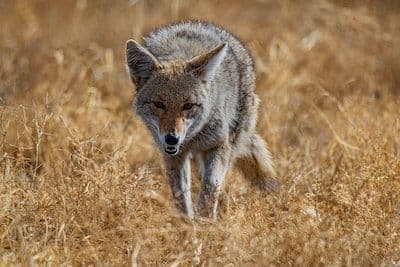Spring Predator Control Helps Support Conservation


Sam Brunner
05/02/2023
Conservation efforts are made all around the world, thanks to outdoorsmen and women who all share the same passion for the outdoors. With the recent rough winter in parts of the U.S like Wyoming and Colorado, the time has come for all hunters to answer mother nature’s call for help in whatever ways possible. For any of you who have not been informed of the travesty that was the winter in the west, let us fill you in a bit. In some areas of Wyoming, such as the southern, central, and southwestern sections, fawn populations of both deer and antelope in different herds saw about a 90% death rate this past winter. On top of that, doe populations saw an increase of 15%+ to their death rate compared to the average numbers in years past. This was all due to below average temperatures along with above average snow levels, which led to a much higher food shortage that directly impacted the animals’ ability to store fat on their bodies. Some areas of Colorado, such as the western and northwestern sections saw a very similar impact to their ungulate populations. Both states are making efforts to decrease tag allocations and do anything in their power to help our precious animals bounce back. That being said, there are still plenty of ways that us outdoorsmen and women can help! One of the biggest efforts we can make to help is predator control.
Predators, specifically coyotes, in an average year can account for around 70% of fawn mortality rates. Since the timing of mating season for coyotes (Usually February/March) and doe whitetail beginning to drop their fawns (April/May) can be extremely close together, if not at the same time, predator control is vital to keeping populations stable. During and after breeding season, coyotes are extremely territorial, and hungry, and will almost always opt for the easiest meal. A lot of times, that means a new fawn. This is why it’s so important to not give up on the spring after you kill your gobbler on opening morning. Get back out there, throw on your camo, grab your calls, and do your part to help our big game populations thrive.
For those hunters out there who have never tried coyote hunting, this is for you. There are several methods we can use to hunt coyotes that will vary depending on the time of year. For example, if you are to hunt in the early spring, meaning February and March, your tactics should revolve a lot more around the fact that it is breeding season. Likely, the breeding process has already taken place, and coyotes will tend to travel in pairs this time of year (mates) looking for food and protecting their denning areas. To be successful then, find their denning areas and set up on them. Some people will use coyote decoys to represent competition, hoping the big dominant male will come fight them off. If it works, don’t give up just yet! Typically, the female he was mating with will be hot on his heels.

If you are hunting late spring, meaning April and May, your tactics should revolve around the fact that the coyote switches their diet to be predominantly fawn based. This is again because they will almost always choose an easy meal over one that they have to work for. Also, because they know this time of year means lots of newborns to choose from. Hunters can find success using fawn in distress calls, or other predator calls that signify food. If they’re hungry, they will come.
Seems pretty straight forward, right? In reality, it is. However, constant predator control is the only way that the impacts will be seen for years and years to come. There are two types of coyotes: territorial, and transient. What that means is some coyotes, the more dominant and territorial, find a place to den and stick around. Those dogs will have the highest impact on the local big game numbers. But, going out and taking those coyotes off a property is not where the trouble ends. Transient coyotes are travelers, moving from empty den to empty den, until they find an area that they are the most dominant in, and then they become territorial. So, if you spend a week thinning out a coyote population in March and think it’s over, by the end of May another critter will have moved in and taken over.
Predator control will be an ongoing battle that outdoorsmen and women will have to fight. Yes, this year holds an even higher level of importance due to our already hurting big game populations, but the effort must persist. Every hunter, from novice to expert, owes it to our wildlife to try, so that we can continue enjoying what mother nature has given us, for generations to come. Full circle.
For a list of all Infinite Outdoors predator properties visit the link here and keep any eye out for more coming online soon!